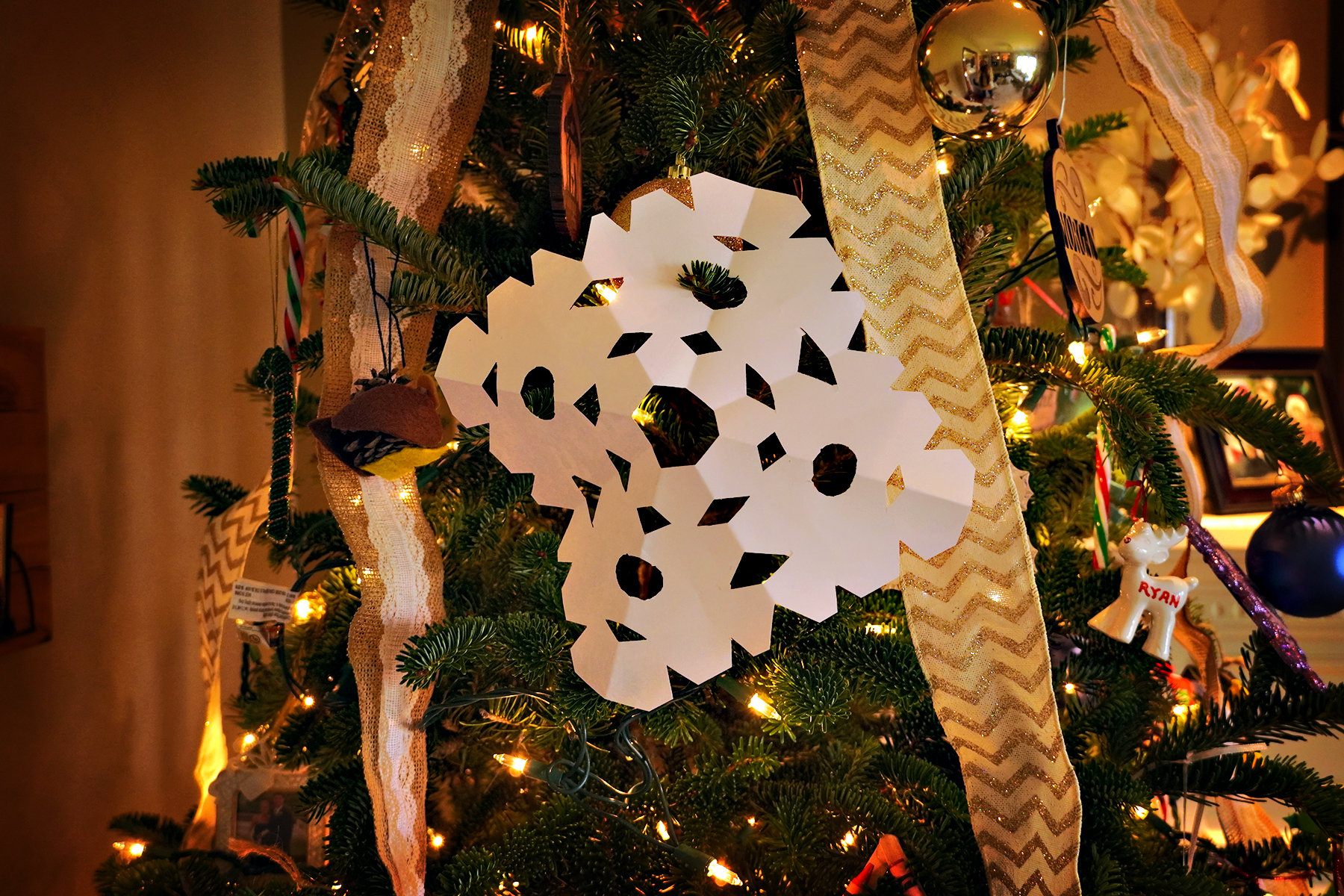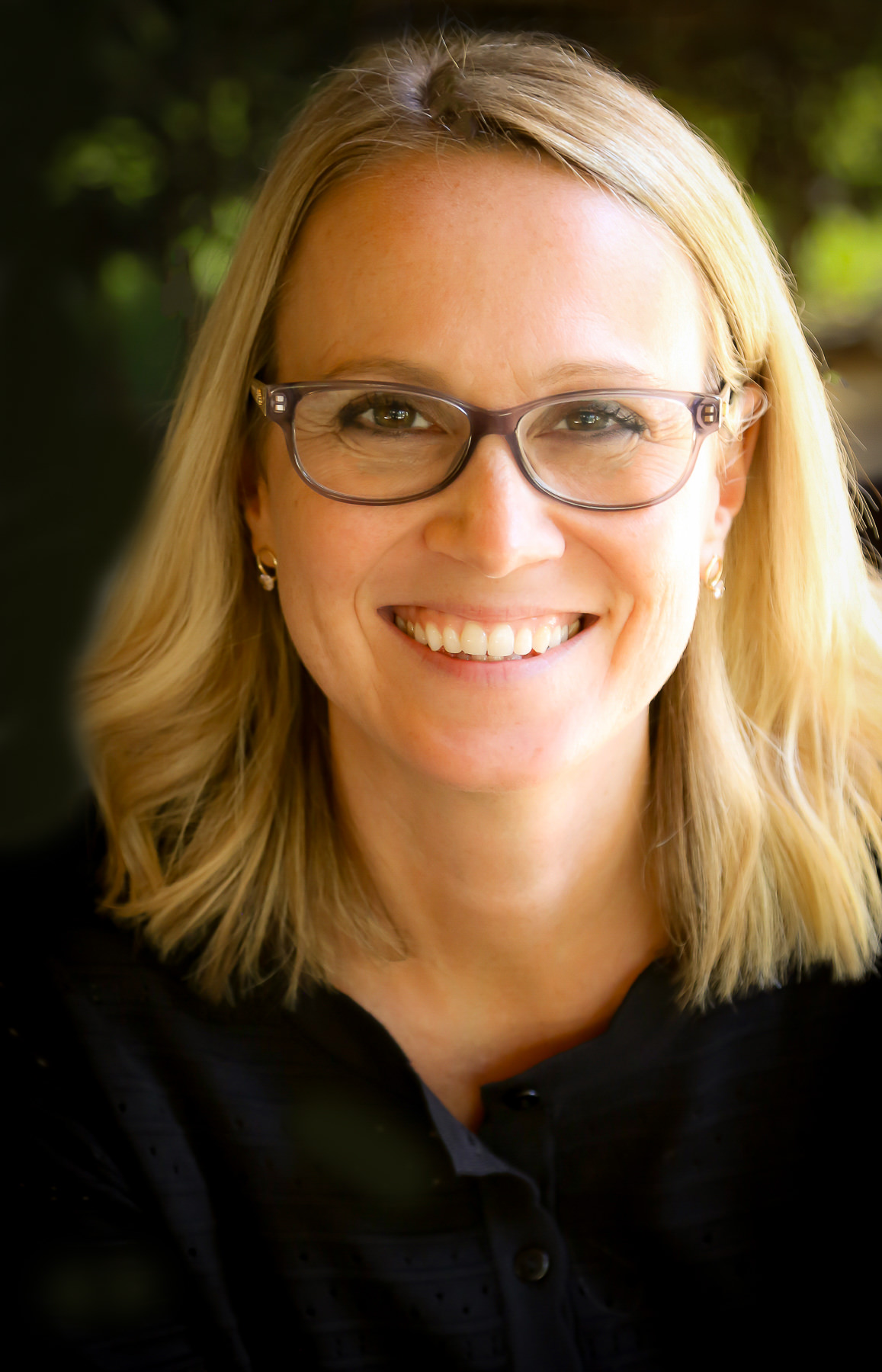Ever since I was little, I’ve found great delight in dragging the overstuffed Christmas boxes up from the basement, pulling lights and beloved treasures out one by one, and drenching my living room with the magic of all things Christmas. The boxes always seemed to hold so much promise. Glass snowmen wrapped in paper towel and stuffed into stockings for safe-keeping. Handmade ornaments with names written in backwards K’s and E’s. Pictures of loved ones, labeled with the various passing years.
Last weekend, we embarked once again on turning our living room into a Christmas wonderland. In addition to the standard decor, all four of my kiddos went about their own merry-making, cutting out handmade snowflakes while the rest of us dressed the tree. Before long, my dining room was covered in snow – not just the beautiful snowflakes my kids had carved, but also the accumulation of bits and pieces of white paper that had been cut away to make room for the intricate patterns to emerge.
Once I was able to see past the mess their project created, I was warmed by the way their improvisation had added a jovial dash of the unexpected to our treasured traditions.
Each Christmas season seems to bring something of the unexpected, especially when it comes to how this merry-making is received into the deepest places of my soul. Some years I’m surprised by joy – a refreshing awareness of peace, a deep satisfaction, and the sense that, even if for a moment, all is well. Other years, I’m overtaken by the heaviness of grief. The warmth of Christmas only serves to reveal my incongruence to it, and I can’t quite seem to touch the beauty dancing all around me. It’s as though I’m physically and emotionally unable to rise to the occasion of the season, and Christmas simply passes me by. All those Christmas boxes, full of promise, come up empty.
This year, I find myself stuck somewhere in the in-between. And I wonder if that’s not where many of us find ourselves much of the time. It’s not a place where all feels merry and bright, but also not a place completely swallowed up by the shadow of grief. It’s neither the soothing relief of healing, nor the searing pain of utter brokenness. Maybe just the dull ache of dislocation.
My husband and I have much to celebrate this year. A new job. Exciting new projects. A beautiful home. Four healthy children. Cherished friends and family.
And yet, we are limping through our days a bit. We are currently in the process of saying goodbye to our church home of ten years. This has been a painful untethering, magnified by the fact that we have not yet found a new place to belong. We are also helping dear friends prepare for a move across the country and already grieving the vacancy they will leave behind. This weekend, we will gather with family by the warmth of a dancing fire, almost one month to the day we gathered by the cold stillness of a grave to bid farewell to a beloved son, uncle, and brother.
This Christmas, it seems we are living in the both/and of beauty and ashes.
I’m not sure we’ll get to all our festive traditions this year. Last Sunday’s Advent passed us by with no devotional. Weary and physically tired, I’ve felt disappointed in myself for not grabbing hold of all the Christmas season has to offer, while also trying to allow myself space to grieve and to accept my human limitations.
And at the same time, this year’s view from the in-between helps me pay better attention to beauty and the unexpected surprises rising out of those empty places where my expectations were, those gifts that tap me on the shoulder with reminders of Christmas when I least expect it. It seems this is how God has been dealing with me lately – showing up in the emptiness left behind after letting go and surprising me with His Presence there. Emptiness making room for fullness.
In the absence of an Advent devotional, an unexpected accompaniment to my Christmas season turns out to be a memoir I’ve been slowly ingesting since summer, The Pastor by Eugene Peterson. God’s timing is perfect, and the chapters I’ve come upon in these last couple of days, while not the stuff of traditional Christmas fare, are deliciously felicitous for the Christmas season.
Peterson writes about the Ark of the Covenant and how it is intentionally and artistically designed. Its tangible shape formed of gold and wood speaks to invisible realities in the way any good, true, and beautiful work of art must do. He says,
“The ark, placed at the heart of the wilderness tabernacle, was a visible focus for the worship of God…The center was designated the mercy seat. It was flanked by cherubim with outstretched wings. But the mercy seat was not a seat at all. It was empty space, a void, an emptiness framed by the angel wings that marked the presence of the enthroned God, Yahweh.”
I am not a theologian; I tremble at the thought of touching the infinitely rich meaning of the Ark of the Covenant, but I can’t help but imagine the possibilities this image holds, especially for those of us experiencing our own empty spaces this Christmas.
Peterson is, of course, echoing Exodus 25:20-22, where we are told that the cherubim are positioned on either side of the Mercy Seat. How incredible the thought of these towering cherubim, with their sprawling angel wings, keeping watch and defending the empty space in between – a sacred place where the Presence of God will dwell.
Will dwell. God makes a promise to Moses about this empty space, speaking tenderly to him.
“There I will meet you.”[1]
For those of us hobbling along this Christmas, we don’t have to pretend away the empty places, or drown them in eggnog, or dress them up in twinkle lights. In fact, it’s better if we don’t. The void is painful, but it is full of promise. There He will meet us.
This is the reality we celebrate in the Christmas season. Immanuel, God with us. A reality birthed in and from empty spaces. Away from an over-crowded inn and inside the frame of an empty barn, guarded by shepherds and angels, Mary gave birth to the Light of the whole world. I can’t imagine what it must have been like for her to feel the subsiding of her swollen belly, to run her fingers over the stretched skin that marked the place where Christ had dwelt. Mary, full of the promises of God, had to experience the emptying of her womb so the world could be full of the Light of Christ.
And then Christ emptied himself for us, so that God’s Presence would no longer be relegated to the space in between the cherubim, but could instead be turned loose on the world, a rushing and plunging river swallowing up the dry ground, a bending and stretching light invading every last corner of darkness. The empty tomb, full of the promise of resurrection.
Emptiness making room for fullness. It’s not just some beautiful idea; it’s stunning reality.
I want to wrap it around my whole being like a blanket, not only as I wait expectantly to celebrate the birth of Christ and peace on earth, but also when I feel the chill of those empty places formed by life lived in an already-and-not-yet Kingdom. In these in-between spaces where beauty and ashes are both still a part of our story, He is here.
I look again at the paper snowflakes my kids meticulously carved, and I run my eyes over the loveliness of their empty spaces, those places in between where the paper was cut away to make something beautiful. And in this season of dislocation, I am reminded that I don’t need Christmas movies and lighted neighborhoods or even the perfect Advent devotional for Christmas to be merry. I don’t need to rise to the occasion of Christmas because Christ has come down to us, dwelling in the empty spaces and making them into something beautiful.
[1] Exodus 25:22, ESV
The featured image of the Paper Snow Flake is courtesy of Nicole Nowe and used with generous permission for The Cultivating Project.
Nicole Howe is a writer, speaker, Bible study teacher, wife, and homeschooling mama to four kiddos. She serves as editor and regular contributor for the quarterly publication, An Unexpected Journal and holds a Masters Degree in Cultural Apologetics from Houston Baptist University, where she discovered the power of the imagination to restore awe and wonder to her floundering faith. Drawing deep insights from her ordinary experiences, Nicole is passionate about helping others discover the Truth, Goodness, and Beauty of Christ in broken and unlikely places. When she’s not devouring books, Nicole loves singing, pretending to be a chef, and performing Improv at her local theater.
Leave a Reply
A Field Guide to Cultivating ~ Essentials to Cultivating a Whole Life, Rooted in Christ, and Flourishing in Fellowship
Enjoy our gift to you as our Welcome to Cultivating! Discover the purpose of The Cultivating Project, and how you might find a "What, you too?" experience here with this fellowship of makers!


Add a comment
0 Comments